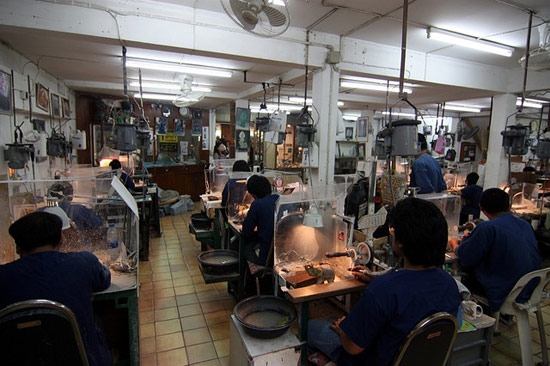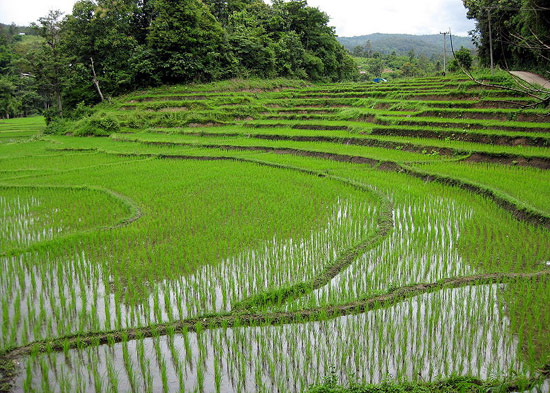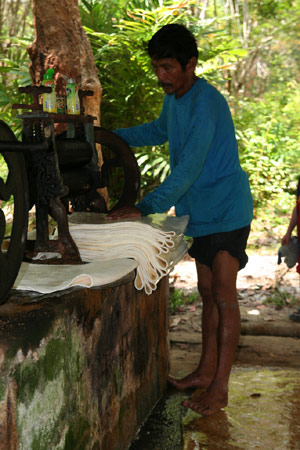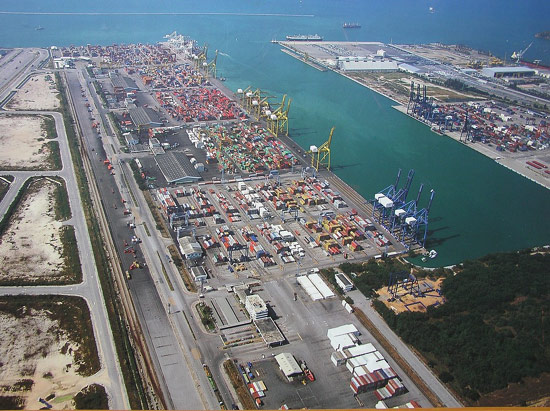Country Snapshot: Trade Overview
Thailand has a strong export sector, largely driven by agricultural commodities and its thriving manufacturing sector. However, the Thai economy has weathered several challenges. The economic crisis of 2008 cut the nation's exports and severe flooding in 2011 extensively damaged the manufacturing sector. Political turmoil decreased the number of international visitors, negatively impacting Thailand’s tourism industry, and left the country in a state of further economic uncertainty. A member of the World Trade Organization (WTO), Thailand supports the multilateral trading system and has interests in agriculture, intellectual property, market access in the non-agricultural sector, and fish subsidy standards.
Trade History
Thailand’s early inhabitants created centers of bronze metallurgy; this process, along with the cultivation of wet rice, is believed to have started in Thailand and later spread to the rest of Asia.
In the late 20th century, the country launched an export-fueled development strategy, which transformed the Thai economy into a major exporter of industrial products. By the 1990s, exports had brought rapid economic expansion. After the 1997 Asian financial crisis, the government focused on strengthening infrastructure and attracting private investment.
From 2000 to 2007, Thailand enjoyed solid growth that averaged more than 4 percent annually, due mostly to exports such as jewelry and agricultural products. The 2008 global recession led to a double-digit drop in export demand in most sectors. Exports rebounded shortly afterward and the economy expanded by almost 8 percent. Political protests negatively impacted consumer and business confidence, along with the tourism sector. But despite the violence, tourism made a quick recovery.
Top Export Partners
Thailand’s main export partners are China, with 12 percent of sales; Japan and the US, with 10 percent; Hong Kong, with 6 percent; Malaysia, Indonesia, and Singapore, each with roughly 5 percent; and Australia, with 4 percent. Thailand is the 26th largest exporter in the world.
Major Export Products and Services
Thailand’s principal export products include computers, automobiles, electrical appliances, fishery products, rubber, jewelry, rice, and textiles and footwear. Manufactured products comprise nearly 75 percent of total merchandise exports, with office machines and telecommunications equipment being the most important merchandise categories.
Top Import Partners
Thailand’s main import partners are Japan, with 20 percent of purchases; China, with 15 percent; the United Arab Emirates, with 6 percent, and the US and Malaysia, each with 5 percent.
Major Import Products and Services
Thailand’s top import products are fuels, intermediate goods and raw materials, consumer goods, and capital goods. More than half of imports are composed of manufactured goods, including office machines, telecommunication equipment, and chemicals. Fuels make up less than 20 percent of imports.
Barriers to Trade (Tariff and Non-Tariff)
Thailand’s weighted average tariff rate hovers at a moderate 5 percent. Non-tariff trade barriers include import bans and restrictions, import fees and taxes, services market access barriers, complex standards, complex licensing requirements, restrictive sanitary regulations, opaque government purchasing and customs values, and export subsidies. Piracy of optical media is common. The government also reserves the right to disclose trade secrets to protect non-commercial “public interests.”
Major Ports
Thailand has five main ports: Map Ta Phut, Laem Chabang, Si Racha, Prachuap Port, and Bangkok.
Article written for World Trade Press by Eileen Rojas.
Copyright © 1993—2025 World Trade Press. All rights reserved.

 Thailand
Thailand 


